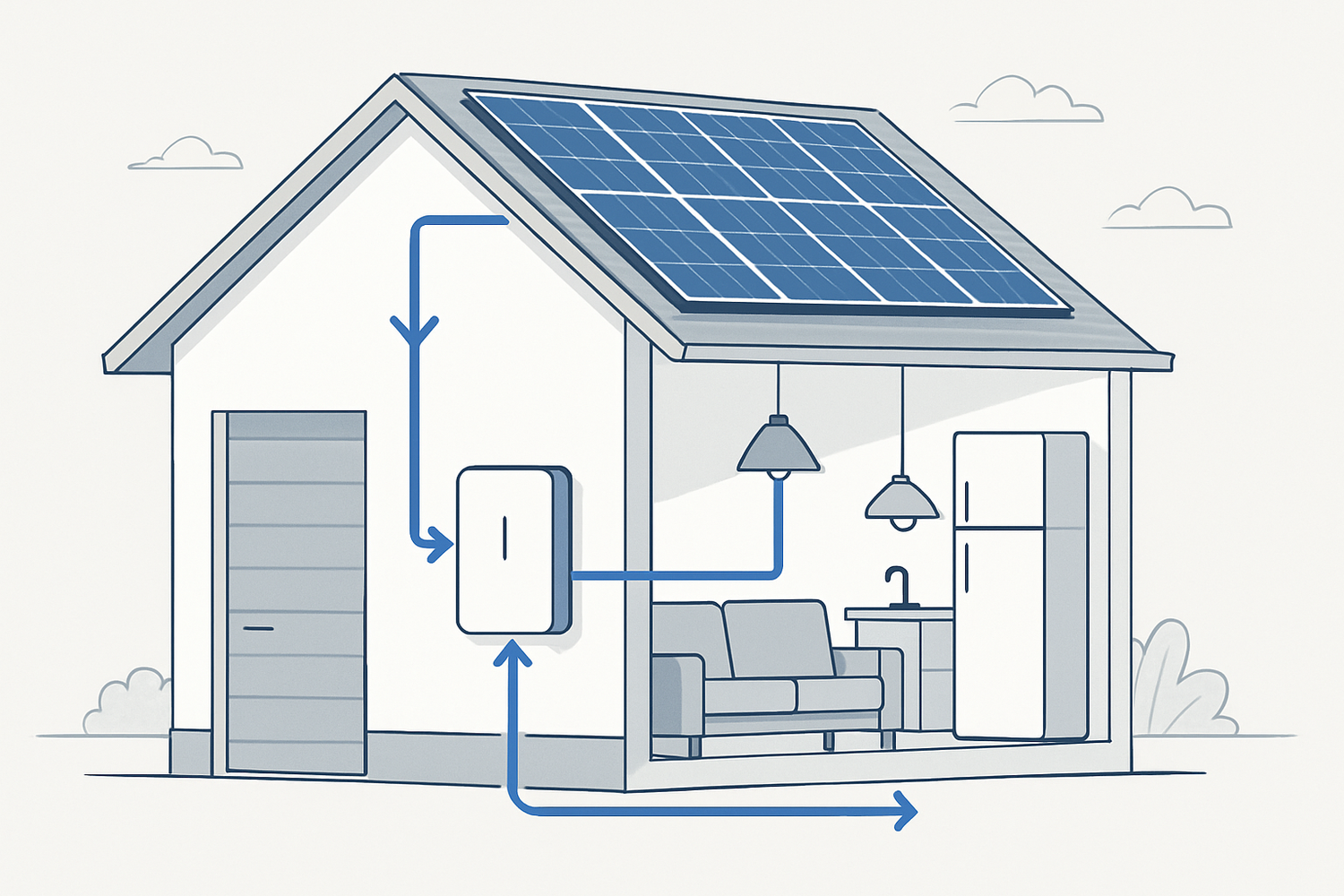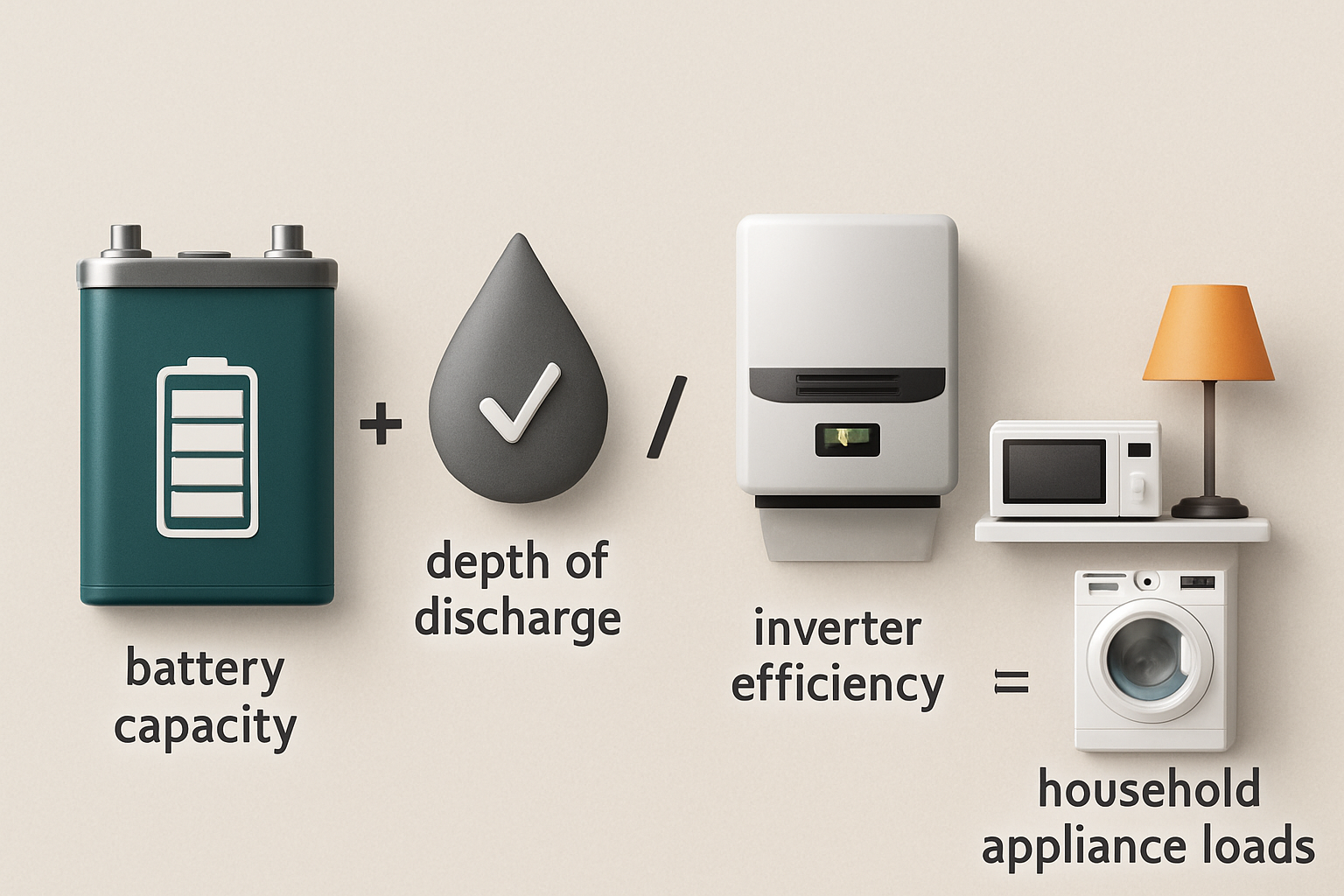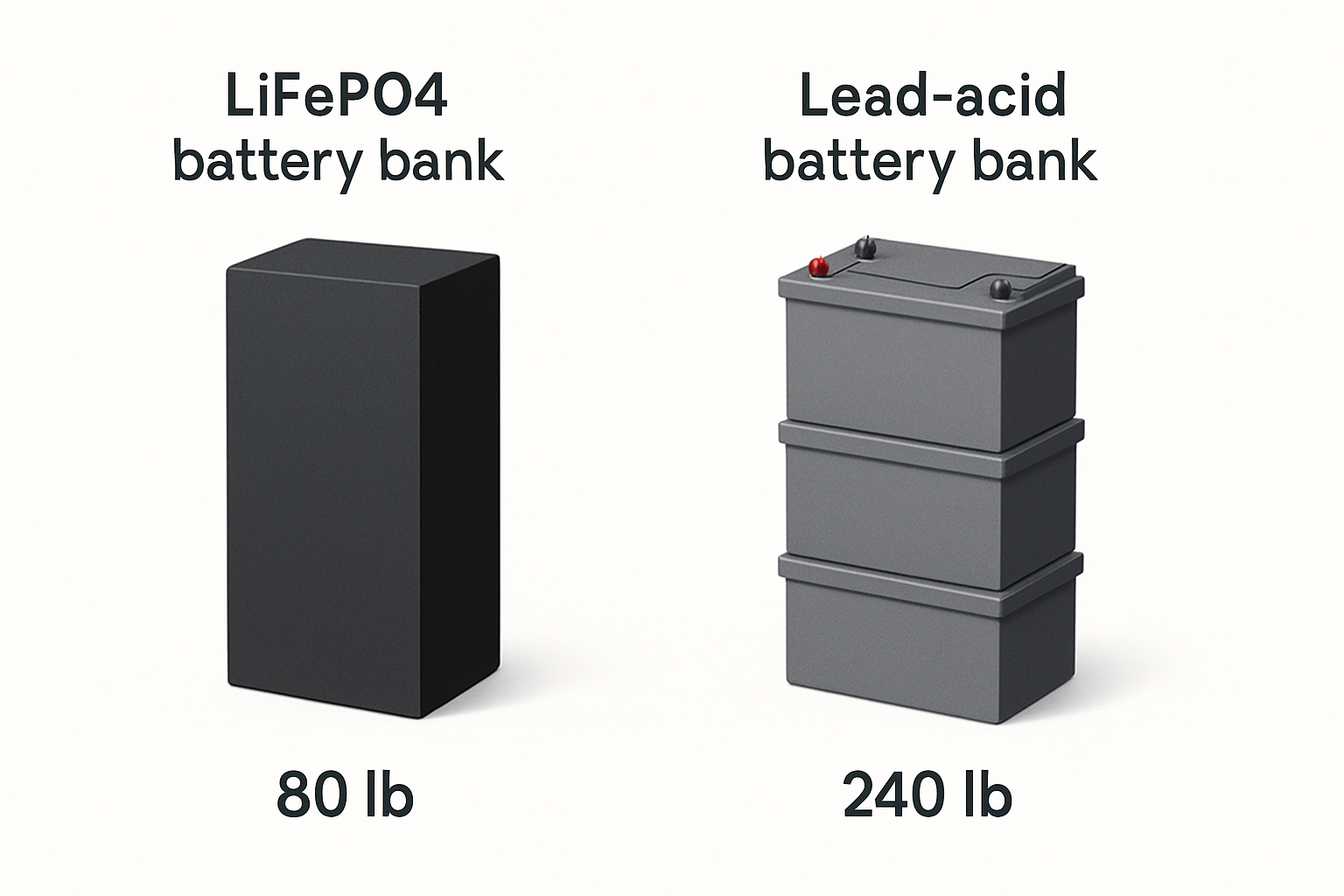Achieving energy independence is a primary reason many people invest in solar power. A solar energy storage system allows you to store the electricity your panels generate for use when you need it most, such as during a power outage or at night. The key to a reliable system is correct sizing. An undersized battery will leave you without power when you need it, while an oversized one represents a significant and unnecessary expense. This guide provides a clear, step-by-step process for an accurate solar battery sizing calculation.
Step 1: Conduct a Thorough Home Energy Load Analysis
Before you can determine the right battery size, you must first understand how much energy your home consumes. This process, known as a load analysis, is the foundation of sizing your solar battery for home backup. It involves identifying which devices you need to power and calculating their total energy draw.
Identifying Your Critical Appliances
During a power outage, you likely do not need to power your entire home. The focus should be on 'critical loads'—the essential appliances and devices required for safety and comfort. A precise load analysis for solar batteries separates these essentials from non-essentials.
- Refrigerator/Freezer
- Essential Lighting (e.g., kitchen, bathroom)
- Well Pump or Sump Pump
- Medical Equipment (e.g., CPAP machine)
- Communication Devices (modem, router, phone chargers)
- Small Kitchen Appliances (e.g., microwave for brief use)
Calculating Your Daily Energy Consumption (kWh)
Once you have a list of critical appliances, the next step is to calculate their daily energy consumption. You can usually find the wattage (W) of an appliance on its label or in the owner’s manual. The basic formula is:
Appliance Wattage (W) × Hours of Use Per Day = Daily Energy Consumption (Watt-hours or Wh)
To make the numbers more manageable, you can convert Watt-hours to kilowatt-hours (kWh) by dividing by 1,000. Here is a sample calculation:
| Appliance | Power Rating (Watts) | Daily Hours of Use | Daily Energy (Wh) | Daily Energy (kWh) |
|---|---|---|---|---|
| Refrigerator | 200 W (runs intermittently) | 8 hours | 1600 Wh | 1.6 kWh |
| LED Lights (5) | 50 W (total) | 6 hours | 300 Wh | 0.3 kWh |
| Internet Modem/Router | 15 W | 24 hours | 360 Wh | 0.36 kWh |
| Well Pump | 750 W | 1 hour | 750 Wh | 0.75 kWh |
| Phone Chargers (2) | 20 W (total) | 4 hours | 80 Wh | 0.08 kWh |
| Total | 3090 Wh | 3.09 kWh |
Accounting for Phantom Loads
Phantom loads, or standby power, refer to the energy consumed by electronics even when they are turned off. Devices like televisions, game consoles, and chargers constantly draw a small amount of power. While individually small, these loads can add up, so it is wise to add a small buffer (around 5-10%) to your total daily energy calculation to account for them.
Step 2: Determining Your Desired Backup Duration
The next part of your energy independence calculation is deciding how long you want your battery to power your critical loads without any input from the grid or sun. This is often referred to as 'days of autonomy'.
Factors Influencing Autonomy Needs
Your desired backup duration depends on several factors:
- Grid Reliability: If your area experiences frequent, multi-day outages, you may want two or more days of autonomy.
- Local Weather: In regions with long periods of cloudy weather, a larger battery bank provides a necessary buffer.
- Personal Needs: If you rely on powered medical equipment or work from home, a longer backup duration provides greater peace of mind.
The U.S. Department of Energy's research on microgrids emphasizes how solar-plus-storage systems strengthen community resilience, a principle that starts with individual homes having sufficient backup.
The Sizing Calculation
The calculation to determine your total required storage capacity is straightforward:
Total Daily kWh × Desired Days of Autonomy = Required Battery Capacity (kWh)
Using our example from above, if you want two days of backup power, the calculation would be: 3.09 kWh × 2 Days = 6.18 kWh. This is the minimum usable energy your battery must hold.
Step 3: Factoring in Battery Specifications and System Inefficiencies
The number you just calculated is the usable capacity you need. However, the rated capacity of the battery you purchase must be slightly larger to account for technical factors like Depth of Discharge and system efficiency.
Understanding Depth of Discharge (DoD)
Depth of Discharge (DoD) refers to the percentage of a battery's total capacity that is used. To extend a battery's lifespan, it is not recommended to drain it completely. High-performance batteries like Lithium Iron Phosphate (LiFePO4) offer a significant advantage here, as they can safely handle a high DoD, often 90% or more, without degrading quickly. The final sizing formula is:
Required Battery Capacity / Depth of Discharge (%) = Final Battery Size (kWh)
For a LiFePO4 battery with a 90% DoD, our example calculation becomes: 6.18 kWh / 0.90 = 6.87 kWh. You would need to purchase a battery or battery bank with at least this rated capacity.
System Inefficiencies and Temperature Effects
Energy is lost during the conversion process from DC (battery) to AC (home appliances) through the solar inverter. Additionally, the battery itself has a round-trip efficiency. As detailed in the ultimate reference for solar storage performance, LiFePO4 batteries feature high round-trip efficiency, often exceeding 95%, which minimizes these losses. Temperature also plays a role; extreme cold or heat can temporarily reduce a battery's effective capacity. It is wise to add a small buffer of about 10% to your final calculation to cover these variables, bringing our example to around 7.5 kWh.
Matching Your Battery to Your Solar Array
Your solar array must be large enough to power your home during the day and fully recharge your battery. The International Renewable Energy Agency (IRENA) notes in its Electricity Storage Valuation Framework that the synergy between generation and storage is fundamental to a system’s economic and technical viability. An undersized solar array will leave your battery perpetually undercharged, failing to provide the backup duration you planned for.
Putting It All Together: Your Path to Energy Security
Properly sizing a solar battery is not a guess; it is a data-driven process. By carefully analyzing your loads, determining your autonomy needs, and accounting for battery specifications, you can build a reliable energy storage system that serves you for years. This methodical approach ensures your investment provides true security and independence. The growing adoption of renewable energy, as tracked in the IEA's World Energy Investment 2023 report, is driven by robust technologies like advanced LiFePO4 batteries that make such independence possible.
Frequently Asked Questions
How does a solar inverter fit into the battery system?
A solar power inverter, specifically a hybrid inverter, acts as the brain of the system. It manages the flow of electricity between the solar panels, the battery, the home's appliances, and the grid. It converts the DC electricity from the panels and battery into the AC electricity your home uses.
Can I add more batteries to my system later?
Yes, many modern residential energy storage solutions are designed to be modular and scalable. Using LiFePO4 batteries often makes this easier, as you can add more battery units in parallel to increase your total storage capacity as your energy needs grow.
What is the difference between kWh and kW in battery sizing?
Kilowatt-hours (kWh) and kilowatts (kW) are two distinct but related measurements. kWh represents energy capacity—how much total electricity the battery can store. kW represents power—how much electricity the battery can deliver at any single moment. A battery with a high kW rating can run more high-power appliances simultaneously.
Do I need a bigger battery for an off-grid solar system?
Typically, yes. An off-grid solar solution relies entirely on solar generation and battery storage, with no grid to fall back on. Therefore, off-grid systems usually require a larger battery bank with more days of autonomy (often 3-5 days) to ensure continuous power through extended periods of bad weather.





Leave a comment
All comments are moderated before being published.
This site is protected by hCaptcha and the hCaptcha Privacy Policy and Terms of Service apply.